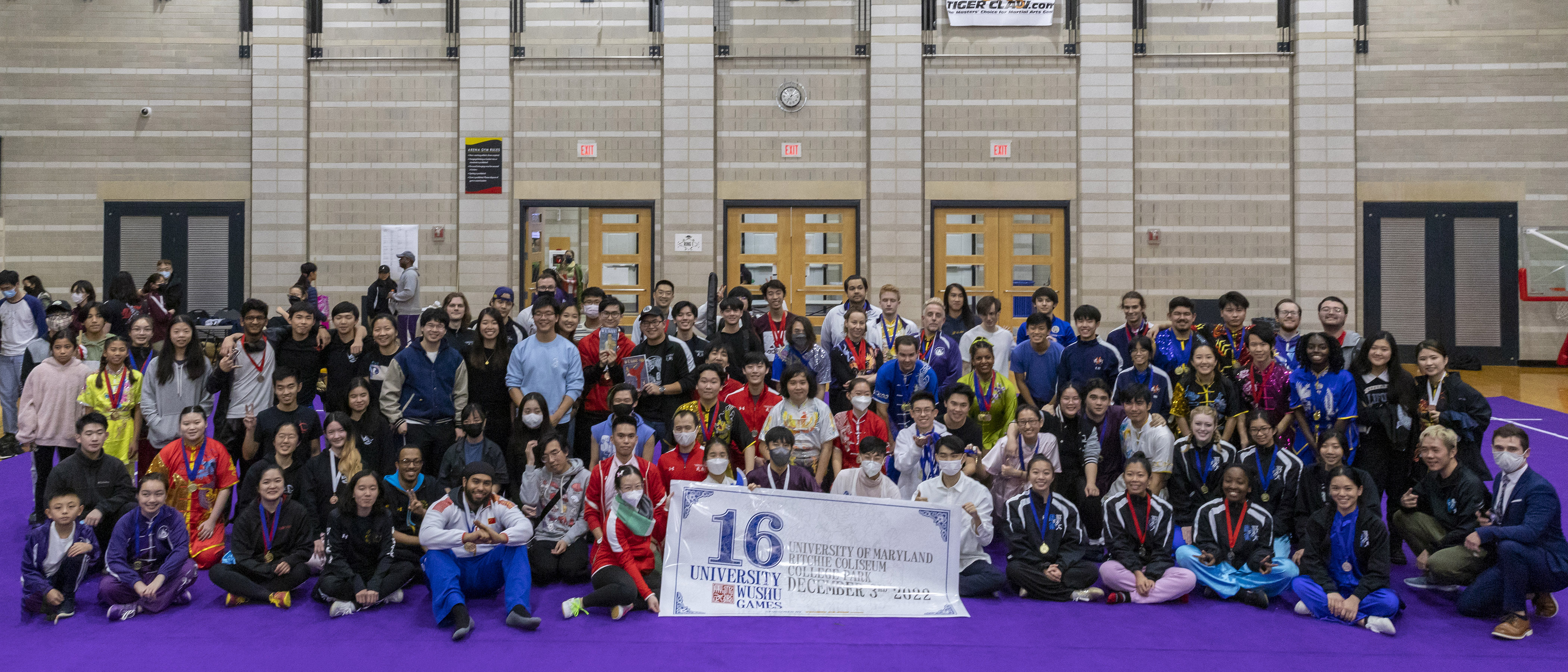University Wushu Games


The below categories must stay consistent within the competition. For example, you cannot compete in multiple experience or age levels in the competition. You are allowed to compete in both the standard open events and international events.
| 5.0 | A Panel Judge: Quality of Movement |
| 5.0 | B Panel Judge: Judgement of Performance |
| 10.0 | Total Points |
| 5.0 | A Panel Judge: Quality of Movement |
| 3.0 | B Panel Judge: Judgement of Performance |
| 2.0 | C Panel Judge: Nandu |
| 10.0 | Total Points |
| 1.4 | Movement Score |
| 0.6 | Connection Score |
| 2.0 | Total Points |
| 6.0-6.95 | Beginner level skill |
| 7.0-7.95 | Intermediate level skill |
| 8.0-9.95 | Advanced level skill |
0.1 Deduction, unless otherwise specified |
Code | |
| Upper body swaying, shuffles or skips in balance | 70 | |
| Deduction of 0.2 point for extra support | 71 | |
| Deduction of 0.3 point for body-fall | 72 | |
| Blade goes off handle, or apparatus touches body or carpet, or gets deformed. | 73 | |
| Deduction of 0.2 point for breaking apparatus | 74 | |
| Deduction of 0.3 point for dropping apparatus | 75 | |
| Band drops from broadsword, tassel from sword or spearhead, or ornament from costume or headwear. Competitor’s body or hands get entangled with band or tassel, or with soft apparatus. Buttons get loose, or costume torn up, or shoes off feet. | 76 | |
| Longtime balance kept motionless for no more than two seconds | 77 | |
| Any part of competitor’s body touches floor outside carpet. | 78 | |
| Movement forgotten | 79 |
| Beginner | At least 30 seconds |
| Intermediate | At least 1 minute |
| Advanced | At least 1 minute, 20 seconds |
| Barehand routines | At least 1 minute |
| Weapon routines | At least 1 minute |
| Taijiquan | At least 5 minutes, no more than 6 minutes |
| Taiji Weapon | At least 3 minutes, no more than 4 minutes |
| Group A | At least 1 minute, 20 seconds |
| Group B | No time limit |
| Group C | No time limit |